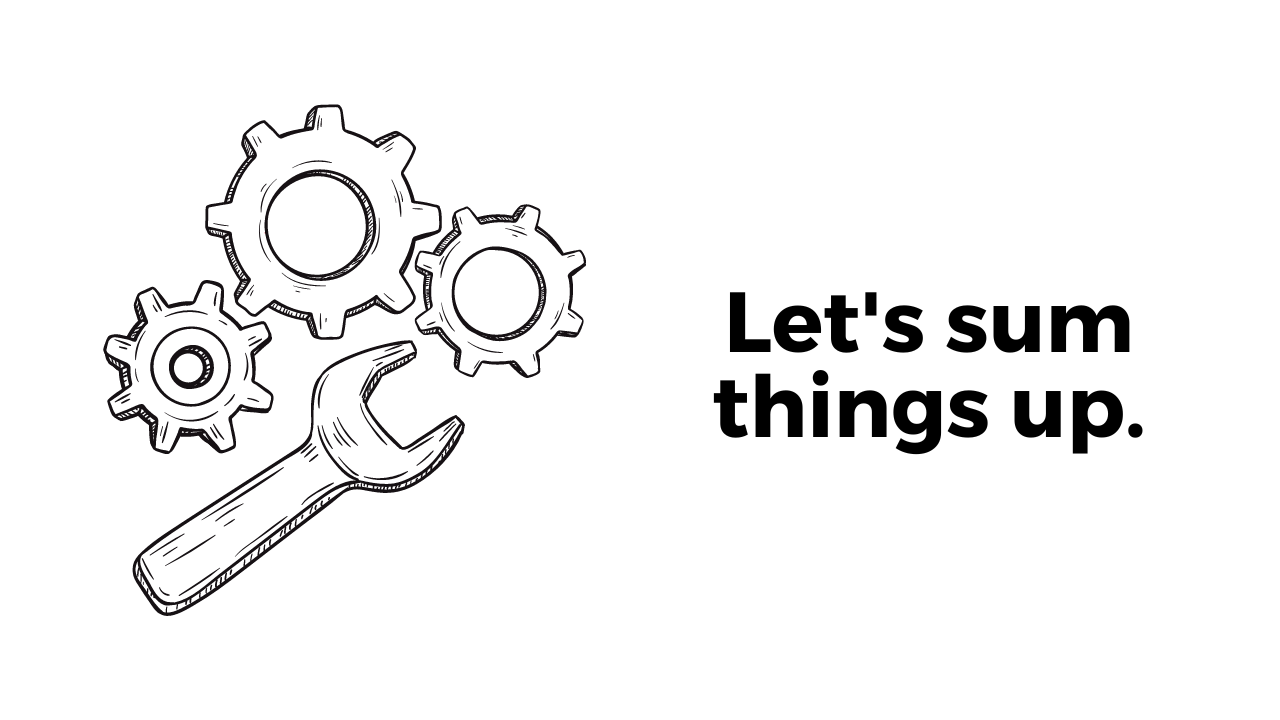Explained: Business Model Canvas
Aug 24, 2023
Have you ever wondered how successful businesses plan and strategize their operations? The key lies in a simple yet powerful tool called the Business Model Canvas (BMC). If you're unfamiliar with this concept, don't worry, we've got you covered.
In today's fast-paced and competitive business world, having a clear understanding of your company's business model is vital. The BMC is a visual framework that helps entrepreneurs and business professionals to map out and analyze the various aspects of their business in a concise and organized manner.
Whether you're an aspiring entrepreneur or a seasoned business owner looking to refine your strategy, understanding the BMC can be a game-changer. In this article, we will break down the components of the BMC and explain how it can help you create a sustainable and successful business. So, let's dive in and demystify the Business Model Canvas.
Why do we use it?
The Business Model Canvas is a strategic tool that provides entrepreneurs and businesses a concise overview of a business's key components. It provides a framework for understanding the key components of a business and how they fit together to create a viable and sustainable business model. It's widely used in business schools, but it's the opposite of 'business fluff.' It forces you to really understand at a high level, on one-page, how your business works.
One of the main reasons why we use the BMC is because it allows us to have a clear and concise overview of our business idea. It breaks down the complex nature of a business into nine building blocks, making it easier to understand and communicate the various elements that contribute to its success. By mapping out the different aspects of our business, such as the value proposition, customer segments, channels, revenue streams, and cost structure, we can easily see how all these elements interact and contribute to the overall success of our business.
Another reason why the BMC is widely used is because it encourages us to think critically and strategically about our business idea. It prompts us to ask important questions such as: Who are our target customers? What problem are we solving for them? How are we delivering value to them? How are we generating revenue? By answering these questions and filling in the different sections of the canvas, we can gain a deeper understanding of our business and identify any potential gaps or weaknesses in our model.
Furthermore, the BMC is a versatile tool that can be used throughout the different stages of a business, from the initial planning phase to the ongoing evaluation and optimization of the business model. It allows us to test and iterate our ideas, make adjustments based on market feedback, and pivot if necessary. By continuously using the BMC, we can ensure that our business remains relevant, competitive, and adaptable in a dynamic and ever-changing market.
Business Model Canvas Explained
The model was initially proposed in 2005 by Alexander Osterwalder, based on his PhD work supervised by Yves Pigneur on business model ontology. The model consists of nine building blocks showing the logic and rationale of how a company intends to deliver value and make money. On one page it shows a business' desirability, viability and feasibility.
You may have read one of the critical steps in starting a business is taking the time to do up a traditional business plan. You can think of the BMC as a one-page summary visual representation of what's entailed in your business plan. It's essentially the opportunity you've identified, how you're going to capture it, and what's needed to make that happen.
The main purpose of the BMC is to help companies and founders move beyond product-centric thinking. It's easy to get caught up in building a cool product, with interesting and unique features. But that doesn't mean people will flock to it and throw money at you. Too often founders fall into the trap of building a 'nice-to-have' rather then a 'must-have' in the eyes of the consumer. The latter ensures a viable business. It enables any business owner to have a high-level overview of the various key components needed and the overall business strategy needing to be executed.
Value Propositions
The value proposition is a concise statement of how you're solving the pain point/problem by offering your product/service as the key solution.
Any business needs to understand that customers or complete strangers are not beholden to make a purchase. They need to see and believe that the value you provide them gives them a good bang for their buck. A business concept that isn't built based off of value is a house built on sand.
If you're unclear about what your value proposition is, you can look at the Value Proposition Canvas model to sort out your thoughts. Alex Osterwalder created this to complement the BMC as a starting point specifically for this reason. It forces you to put yourself in the shoes of a potential consumer, what problem are they trying to solve? How are they currently solving it? What are the pros and cons? It will then ask you to map out your proposed proposition to them. What are the products/services you sell? How does that ease the pain points of the consumer, and what benefits do they get out of using your product/service?
Customer Segments
Next, let's take a look at customer segments. This section is where you list out the details of the various customer segments you see as 'the lowest hanging fruit' in terms of who you'll target in marketing & sales efforts.
Segmenting is looking at those that are experiencing a particular problem, and grouping them based on similar traits: demographics or psychographics for example.
It's easy to fall into the trap of, 'well my solution can be used by anyone...' this is a huge mistake when you're just getting started. You have limited resources and funds - so it's a better strategy to focus on a particular niche or customer base that is really prioritizing this problem. They are the ones that are more likely to pay, and they can also act as advocates of the business if their experience is above and beyond what they expected.
This will include mapping out customer personas. Here's an example: Greg, a 45-year-old male business owner, who brings in an average of ~$75,000 a year in income (before taxes). As a small business owner, he has to juggle plenty of hats - and one of the areas he struggles to keep a good handle on proactively engaging customers. He's currently maintained an excel spreadsheet of current and past customers, but would like to take a more proactive engagement strategy to retain and upsell.
There may be different types of customers based off their sector/vertical. If you're a B2C (business-to-consumer) business, it makes sense to focus on demographics and general interests of potential customers. If you're B2B (business-to-business) it might make sense to divide by industry (eg. small business owners that own inventory; retail, grocery, furniture, tools and renovations etc.).
It is essential to achieve product market fit and one of the key drivers to make that happen is making sure you have a clear picture as to who you're potential customers are. And having a clear understanding as to why they would purchase from you, versus another business.
Customer Relationships
You now need to identify and map out, how the business is going to interact with its customers. Depending on the customer journey, you need to have a thorough understanding of how a potential customer interacts with your business, this will clarify points of engagement needed between yourself and the customer and at what stage of the buying process.
This could include: in-person (one-on-one), third-party contractors, online, events (one-to-many), or phone.
Think about the customer experience. When they first find out about the company (by marketing/sales efforts), how can go about learning more and coming to decision to make a purchase?
For online e-commerce businesses, there is little to no interaction with customers on a one-to-one basis (perhaps unless they reach out to customer service with any questions). Instead they most likely find out about the company by online advertising and social media, perhaps influencers... and going directly to the company's website, browsing products and purchasing through an online checkout.
For B2B brick and mortar business for example the approach will be very different. It will be more one-to-one selling, establishing a more personal relationship with clients and establishing trust. There might be efforts to attend local networking events with boards of trade or chambers of commerce, but the approach to customer relationship building is very different from the previous example.
Customer relationships is very much specific to your business, and how you feel would be more effective in driving sales and long-term growth of the company.
Channels
Channels are defined as the ways of which you provide the product/service to the customer. This encompasses the supply, distribution needed in order to provide the product/service to the end customer.
This could be incredibly important to map out depending on how many suppliers and/or distributors the company relies on both to create the product/service and to deliver it. Your distribution channels should reflect how the customer wants to purchase your product/service. It could be through a partner reseller, direct from your website or ordering through third-party e-commerce sites such as Amazon.
Think about the different channels you're currently using and whether this is the most effective way of delivering to the customer or if there are other options which could provide better value. At the beginning stages of getting the business up and running, you'll also need to think about the internal processes that need to happen in order to get the product/service to the end customer, when an order comes in what happens? How do you fulfill it?
While it's important to map out the customer journey, it's also important to map out the product journey as well. What's the journey it takes in order to be created, to the journey it takes to get to the end customer... how many supply/distribution partners does it come in contact with?
Each additional touch point will need to be taken into consideration both from the additional costs perspective, but also if you need them as key partners to make the business work.
Key Activities
Let's look at the key activities.
Key activities are the specific tasks and actions that a business must perform in order to deliver its value proposition and generate revenue. These activities can vary depending on the nature of the business, but they are essential for its successful operation.
Some examples of key activities in different industries include product design and development, manufacturing, marketing and sales, customer support, and supply chain management. Each of these activities plays a crucial role in the overall functioning of the business.
For example, in a manufacturing company, key activities may involve sourcing raw materials, managing production processes, quality control, and distribution. On the other hand, in a software company, key activities may include software development, testing, and ongoing maintenance and updates.
Identifying and understanding key activities is important because it helps businesses focus on their core competencies and allocate resources effectively. By identifying the most critical activities, businesses can prioritize and optimize them to enhance their value proposition and competitive advantage.
Furthermore, key activities can also be outsourced or delegated to external partners or service providers, if it makes strategic sense for the business. This allows the company to focus on its core activities while leveraging the expertise and capabilities of others.
In conclusion, key activities are the essential tasks and actions that a business must undertake to deliver value and generate revenue. By identifying and optimizing these activities, businesses can enhance their overall performance and success in the market.
Key Partners
Key Partners are the individuals, organizations, or entities that a business collaborates with to create, deliver, and capture value. These partners play a crucial role in the success of the business model by providing resources, expertise, and access to a wider network.
Identifying and establishing strong partnerships is essential for a business to leverage the strengths and capabilities of others. These partners can be suppliers, manufacturers, distributors, technology providers, or even strategic alliances with other businesses in the industry.
By collaborating with key partners, businesses can benefit from shared costs, shared risks, and access to new markets or customer segments. For example, a real estate agency may partner with local contractors, interior designers, or mortgage lenders to provide a comprehensive range of services to their clients.
When selecting key partners, it is important to consider their reliability, expertise, reputation, and alignment with the business's goals and values. Building strong relationships with partners based on trust and mutual benefit is crucial for long-term success.
Additionally, businesses should continuously evaluate and nurture their partnerships to ensure they remain relevant and beneficial. This may involve regular communication, performance monitoring, and exploring new opportunities for collaboration to stay ahead in a competitive market.
Overall, the key partners in a business model play a vital role in supporting the value proposition and helping the business achieve its objectives. By leveraging the resources and expertise of these partners, businesses can enhance their competitive advantage and create value for their customers.
Key Resources
In the Business Model Canvas, the subtopic of "Key Resources" refers to the essential assets that a company needs in order to operate and deliver value to its customers. These resources can be tangible or intangible and can include physical assets like manufacturing facilities, intellectual property, human resources, or strategic partnerships.
Identifying and leveraging key resources is crucial for a company to achieve a competitive advantage and differentiate itself in the market. For example, a technology company may consider its software engineers, data centers, and proprietary algorithms as its key resources, while a manufacturing company may consider its production facilities, supply chain networks, and distribution channels as essential resources. Additional resources can also include financial capital, access to customers, and brand recognition.
By understanding and effectively managing its key resources, a company can optimize its operations, reduce costs, improve efficiency, and ultimately create value for its customers. It is important for businesses to regularly assess their key resources and ensure they are aligned with their overall business strategy and objectives.
Cost Structure
The cost structure is an essential component of the BMC, as it outlines the expenses incurred by a company in order to operate. It helps businesses understand and analyze their cost drivers, which can include fixed costs, variable costs, and economies of scale.
By identifying and categorizing costs, businesses can make informed decisions about pricing strategies, resource allocation, and overall profitability. This analysis allows companies to assess the efficiency and effectiveness of their operations and make adjustments as needed.
Understanding the cost structure is crucial for businesses to evaluate their competitive advantage and pricing strategies. By identifying cost drivers and finding ways to minimize costs, companies can optimize their profit margins and gain a competitive edge in the market.
Cost structure analysis also helps businesses identify areas where they can potentially reduce expenses or explore alternative cost-saving measures, such as outsourcing, automation, or renegotiating supplier contracts.
Moreover, a clear understanding of the cost structure enables businesses to accurately forecast their financial performance, set realistic targets, and make strategic decisions about investments and growth opportunities.
Ultimately, a well-managed cost structure allows businesses to achieve financial sustainability, maintain competitiveness, and maximize profitability in the long run.
Revenue Streams
Revenue streams are one of the key components of the BMC. They represent the different ways in which a company generates income and sustains its operations. These streams can come from various sources such as product sales, subscription fees, licensing, advertising, or even rental income. It is important for businesses to diversify their revenue streams to minimize risk and ensure a steady flow of income. By identifying and maximizing their revenue streams, companies can effectively monetize their products or services and increase their overall profitability.
When considering what revenue models work best for your business it's important to take into account the psychology of the consumer (this revolves around pricing, and structuring the payment process for consumers). Perhaps freemium, or free-trials could help establish a sticky experience (but it's important to measure the necessary costs/trade off in order to make this work.
For mass market, direct-to-consumer products, understanding the need for a scalable platform is key. Investing in digital infrastructure can help automate and scale customer acquisition channels to ensure more efficient cost management over time.
Strategyzer - the company Alex Osterwalder founded - has both a business model canvas template as well as templates for other helpful model they've created. And a simple Google search of 'business model canvas examples' will provide you with a plethora of ideas on how to apply your business.
In conclusion, the BMC is a high level overview that focuses on establishing the key elements of all mechanisms needed for your business to work. It's important to understand how the business model elements components interact with one another. Once filled out, it's important to view the BMC as a moving and ever evolving - this allows for continuous business model innovation which is necessary in order to keep an open mind, and foster constant improvement to the business itself. It's critical to treat each section of the BMC as key building blocks that interact with one another and should be well defined.
Stay connected with news and updates!
Join our mailing list to receive the latest news and updates from our team.
Don't worry, your information will not be shared.
We hate SPAM. We will never sell your information, for any reason.







